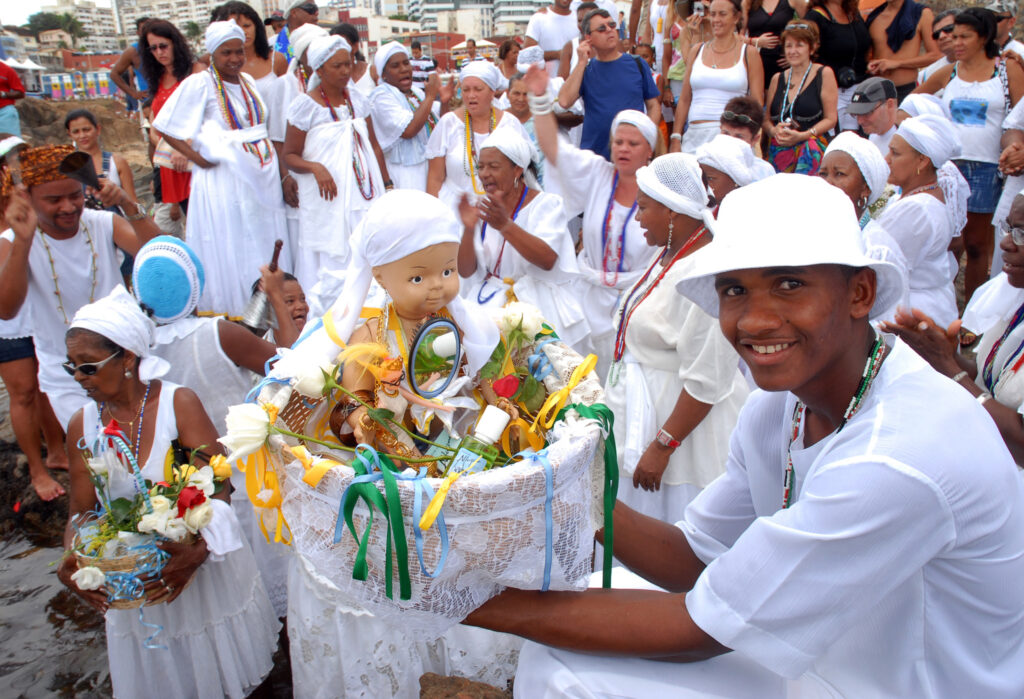The Iemanjá Festival is an Afro-Brazilian spiritual celebration in honor of the orixá Iemanjá (also spelled Yemanja), which took place last week in Salvador, the capital of the Brazilian state of Bahia and is one of the most popular events of the year and attracts a huge crowd to the beaches of Rio Vermelho (Red River).
The festival is located next to Casa do Peso, the main location for the local fishermen where they store their tools and scales. In this same building, there is a place reserved for the worship of Iemanjá. Visitors travel from all around the world to view the statues and artwork inside and to place candles in honor of the deity.
In Brazil, Iemanjá, the goddess of the sea, is a central deity in the Candomblé religion. She protects and guides sailors and fishermen and regulates their catches. Iemanjá is associated with every aspect of womanhood, fertility and family; she is also the protector of children. She often is depicted as a mermaid and is always dressed in either white or blue.
Candomblé is a spiritual practice that originated in Brazil in the 16th century with the arrival of enslaved people from West Africa. They were forbidden from practicing their own spirituality and were forced to practice Catholicism by their masters. Because of similarities between Yoruban orixás and Catholic saints – Iemanjá was thought to be similar to the Virgin Mary – aspects of the two religions were deeply associated, resulting in syncretism.
Until slavery was abolished in 1888, the festival would have most likely taken place in secret, in various small incarnations. According to historians, today’s festival gained traction in Salvador in 1925, when 25 fishermen in Rio Vermelho made offerings in exchange for calm seas and a plentiful supply of fish.
The day before the festival, people begin bringing offerings to a makeshift shrine guarded by an Iemanjá statue. The festival begins with a fireworks display at sunrise the following day, and the offerings are brought down to the shore to be blessed. Late afternoon, fishermen load their boats with large baskets of gifts and set out to sea to present them to Iemanjá.

Traditionally, people build sand shrines and offer flowers and beauty products such as perfume, lipstick, jewelry and mirrors, but this has also been adjusted over the years. Now, most people choose to throw only flowers, thus avoiding any risk to marine animals.
Small replica boats with Iemanjá statuettes are built and sent out to sea, along with white foods like sweet rice and coconut puddings. If your gift washes up on the shore, it is believed that the goddess rejected it. If it continues out to sea, she has accepted your gift and will bless you.
The celebration is stunning. Hundreds of thousands of people flock to the beach to watch and participate. Women in billowing white dresses perform spiritual rituals. Huge hand-woven baskets overflow with colorful flowers, and large statues of Iemanjá are occasionally carried on shoulders through the crowds and down to the sea.
The procession is a sight to behold. Many of Salvador’s carnival bands attend, filling the streets with music all day and night.
This year, the Atlantic Archives team will be bringing you some up close and personal sights and sounds from the vent. Stay tuned.








